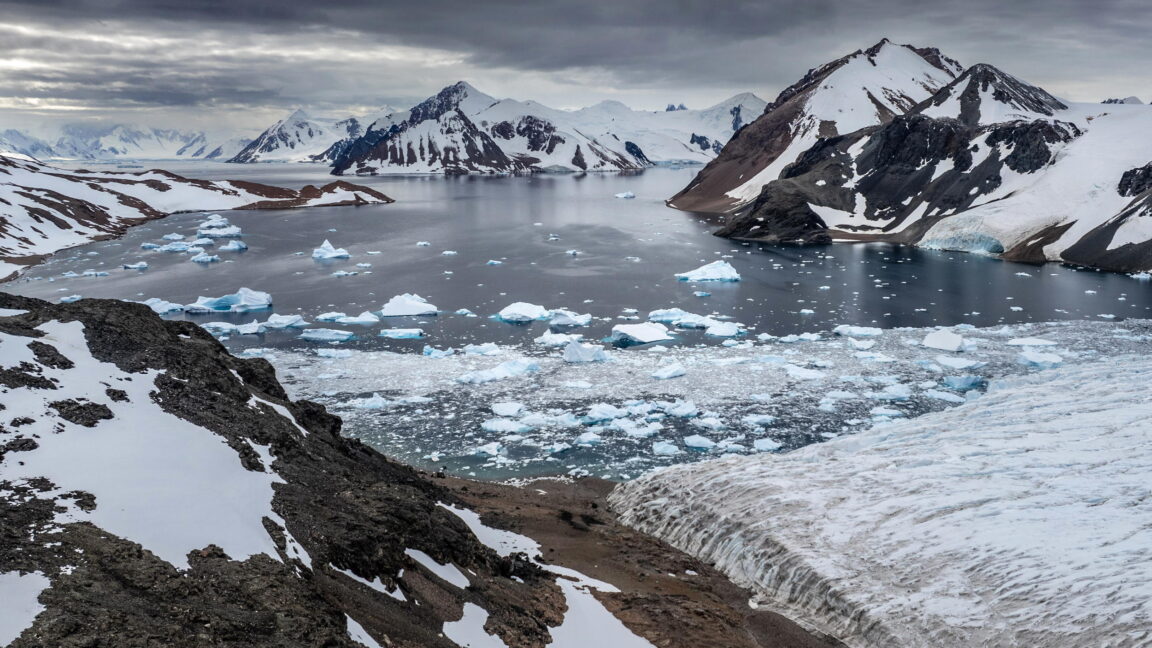Science
Antarctica Faces Greenland-Like Meltdown, Scientists Warn

Recent research reveals alarming changes in Antarctica, indicating that the continent is experiencing conditions reminiscent of Greenland’s ice melt. Historically, the Antarctic ice cap appeared stable compared to the rapidly thawing Greenland Ice Sheet. However, studies indicate that Antarctica is now showing significant signs of vulnerability to climate change, raising concerns about future sea level rise and altered weather patterns.
The Antarctic ice sheet, which covers approximately 5.4 million square miles—an area larger than Europe—contains about 61 percent of the world’s fresh water. If it were to melt completely, it could elevate global sea levels by around 190 feet. Recent observations suggest that both the ice caps and glaciers are becoming increasingly susceptible to warming temperatures, mirroring the conditions observed in the Arctic.
In a paper published in Nature Geoscience, lead author and ice researcher Ruth Mottram from the Danish Meteorological Institute stated that the previous belief that Antarctic ice sheets would remain stable has been proven inaccurate. “We thought it was just going to take ages for any kind of climate impacts to be seen in Antarctica. And that’s really not true,” Mottram explained, pointing to the increasing rates of surface melting and the acceleration of glaciers.
One striking incident highlighted by scientists was the collapse of the Larsen B ice shelf along the Antarctic Peninsula in 2002. This shelf, approximately the size of Rhode Island, crumbled rapidly after experiencing a series of record-warm summers. According to Helen Amanda Fricker, a geophysics professor at the Scripps Institute of Oceanography, the event shocked the scientific community due to the speed of the collapse. “We just couldn’t believe the pace at which it happened,” Fricker said.
The ongoing research indicates a troubling trend: the amount of ice entering the ocean from Antarctica has quadrupled since the 1990s. Fricker noted that this increase signifies a potential tipping point, stating, “We’re on the cusp of it becoming a really big number… because at some point, there’s no stopping it anymore.”
The Antarctic Ice Sheet is divided into three main sectors: the East Antarctic Ice Sheet, the West Antarctic Ice Sheet, and the Antarctic Peninsula. Mottram emphasized that a significant heatwave in 2022 affected even the coldest regions of the East Antarctic Ice Sheet, suggesting that Antarctica is not as isolated from global climate influences as previously thought. The heatwave was exacerbated by an atmospheric river, which has become more prevalent and intense according to current research.
Furthermore, observations show that the Southern Ocean, encircling Antarctica, is beginning to warm, which could further impact the stability of the ice shelves. New atmospheric data indicates that the region is increasingly influenced by warmer air masses from higher latitudes, challenging the long-held perception of Antarctica as a remote and insulated environment.
Researcher Eric Rignot, a professor at the University of California, Irvine, noted the importance of studying the interactions between oceans and ice. He remarked that while similarities exist between Greenland and Antarctica, it is crucial to recognize that the dynamics of warming differ between the two regions. Greenland is currently warming at a rate two to three times the global average, which has led to distinct weather patterns in the Northern Hemisphere.
Mottram reiterated the urgency of addressing climate change, emphasizing that what occurs in Antarctica has global ramifications. “It’s not just this place far away that nobody goes to and nobody understands,” she stated. “We actually understand quite a lot of what’s going on there. And so I hope that it drives more urgency to decarbonize, because it’s very clear that the only way we’re going to get out of this problem is bringing our greenhouse gases down as much as possible, as soon as possible.”
The implications of these findings are profound, suggesting that the accelerating changes in Antarctica could significantly contribute to rising sea levels and alter weather patterns worldwide. As scientists continue to study these dynamic changes, the urgency for global action to reduce greenhouse gas emissions becomes increasingly critical.
-

 Science3 months ago
Science3 months agoToyoake City Proposes Daily Two-Hour Smartphone Use Limit
-

 Top Stories3 months ago
Top Stories3 months agoPedestrian Fatally Injured in Esquimalt Collision on August 14
-

 Health3 months ago
Health3 months agoB.C. Review Reveals Urgent Need for Rare-Disease Drug Reforms
-

 Technology3 months ago
Technology3 months agoDark Adventure Game “Bye Sweet Carole” Set for October Release
-

 World3 months ago
World3 months agoJimmy Lai’s Defense Challenges Charges Under National Security Law
-

 Lifestyle3 months ago
Lifestyle3 months agoVictoria’s Pop-Up Shop Shines Light on B.C.’s Wolf Cull
-

 Technology3 months ago
Technology3 months agoKonami Revives Iconic Metal Gear Solid Delta Ahead of Release
-

 Technology3 months ago
Technology3 months agoApple Expands Self-Service Repair Program to Canada
-

 Technology3 months ago
Technology3 months agoSnapmaker U1 Color 3D Printer Redefines Speed and Sustainability
-

 Technology3 months ago
Technology3 months agoAION Folding Knife: Redefining EDC Design with Premium Materials
-

 Business3 months ago
Business3 months agoGordon Murray Automotive Unveils S1 LM and Le Mans GTR at Monterey
-

 Technology3 months ago
Technology3 months agoSolve Today’s Wordle Challenge: Hints and Answer for August 19









